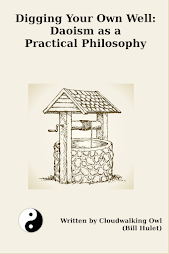I recently picked up my translation of Journey to the West and started reading it again. For those of you who haven't been exposed to it, it is one of those books that I think anyone who is interested in Daoism should read. People sometimes take issue with this, as on the surface it is a story about a Buddhist monk's travels to the West to get scriptures from India. This is a superficial understanding.
The first thing to understand is that there is no definitive "Journey to the West" document. It is based on the travels of Xuanzang, a monk who traveled to India in search of Buddhist scriptures in the
 |
| Xuanzang |
Xuanzang's story became a part of the popular culture of China and entered into an "oral tradition" plus a process of copying and modifying until we ended up with the story that includes the comical figures of Monkey, Pigsy, Sandy, and so on. What many people do not understand, however, is that when the story became "codified" in the 16th century, there were several versions that got printed. So there really isn't one "official version".
 One thing that many don't understand is that Daoism was often taught in popular literature instead of esoteric, hard-to-understand texts. It is true that there are lots of books like The Secret of the Golden Flower , but when the teacher in my school was asked about what would be a good work to translate from Chinese to English, he suggested the popular novel Seven Taoist Masters. People have this assumption that wisdom can only be expressed using ponderous language and old-fashioned words, but the fact is that wisdom is often best expressed by a sly story-teller who knows how to hid wisdom in a rollicking good tale.
One thing that many don't understand is that Daoism was often taught in popular literature instead of esoteric, hard-to-understand texts. It is true that there are lots of books like The Secret of the Golden Flower , but when the teacher in my school was asked about what would be a good work to translate from Chinese to English, he suggested the popular novel Seven Taoist Masters. People have this assumption that wisdom can only be expressed using ponderous language and old-fashioned words, but the fact is that wisdom is often best expressed by a sly story-teller who knows how to hid wisdom in a rollicking good tale. |
| Entrance to White Cloud Monastery |
There are several translations of this Journey out there, but the only one I would recommend is the W. J. F. Jenner version. I got a four volume paperback edition from the Foreign Languages Press several years ago and I love it. What's great about it beyond the sheer ease of reading, is that unlike other abridged versions, Jenner didn't get rid of the poetry. The book is filled with snippets of poetry that I can only imagine come from various traditional sources, and I find that some of the images and ideas presented thought provoking. Look at this one that opens the book
Before Chaos was divided, Heaven and Earth were one;
All was a shapeless blur, and no men had appeared.
Once Pan Gu destroyed the Enormous Vagueness
The separation of clear and impure began.
Living things have always tended towards humanity;Think about that last stanza. "Living things have always tended towards humanity". Of course, Journey to the West is filled with animals that have "evolved" from lower orders to the higher. There are deer demons, tiger demons, alligator demons, and so on. The two main guides for Xuanzang, of course, are a monkey and a pig that have human attributes. But this is a theme all through Chinese popular literature. For example, if you read The Three Kingdoms, which is not really a book that contains many supernatural elements, there is the incident towards the end where Cao Cao wants to build a palace and is told that he needs to have a special type of beam as the center piece of the building. His men find an ancient pear tree that is so tremendously old that it fits the bill. When his men start to chop at the tree, it starts to bleed human blood and screams in agony. Later it's ghost haunts Cao Cao and hastens his death.
From their creation all beings improve.
If you want to know about Creation and Time,
Read Difficulties Resolved on the Journey to the West.
I would suggest that the idea that "from their creation all beings improve" is a tremendously optimistic and humanistic idea. I think that it has a lot in common with the Socratic idea that evil is not much more than ignorance. Contrast that with the Abrahamic view that there is such a thing as "evil", that people know exactly what it is, and, people freely choose to be bad. And if they do, they need to be killed by other people and then tortured for all eternity by an angry God who doesn't believe that people can learn from their mistakes. In contrast, the idea expressed in the stories of Journey to the West is that people have to "grow a bit" before they gain the insight and wisdom necessary to understand the true impact of their actions. If they get a chance to learn from their mistakes and get some good correction, then they can move on and become worthwhile members of society.
I often meet folks who read some version of the Dao De Jing become something like a "libertarian Daoist". For these folks everything becomes permissible and life is not much more than a big joke. I would suspect that these folks would probably say that the ideas expressed in Journey to the West aren't really Daoist, but rather Buddhist. (Actually, I'd think they are more Confucian, that is another story.) But I would draw people's attention to another of the key themes in the Journey: all religions are one. This is a point that the head of my school totally supported, it is something that is repeatedly stated in the book Seven Daoist Masters, and is repeatedly emphasized in Journey to the West.
It is also something that is visualized by one of the most famous traditional Chinese paintings, "Three laughs at Tiger Brook". This painting purports to show three very close friends, a Confucian, a Daoist and a Buddhist, who enjoyed each other's company that they totally lost track
 |
| Three Laughs at Tiger Brook |
This isn't to say that there are not any differences between the three religions. This is suggested by another famous painting, "the vinegar tasters". This purports to be an image of a Buddhist, Confucian and Daoist tasting some vinegar, where it stands for the disappointing elements of life. The Buddhist suggests that the sensation of sourness is an illusion, the Confucian that it is something
 |
| Vinegar Tasters |
The value of a book like Journey to the West is that it gives readers, and an entire society, images and examples that they can draw upon to explain subtle and complex ideas. This is the same thing that I have been doing in this blog post by referring to the two paintings "Three Laughs at Tiber Brook" and "The Vinegar Tasters". Once something becomes famous enough, it ends up becoming the bedrock of a civilization. What would Western civilization been like if there were famous paintings that showed a Jew, Christian and Muslim laughing together or tasting vinegar?







1 comment:
Post a Comment